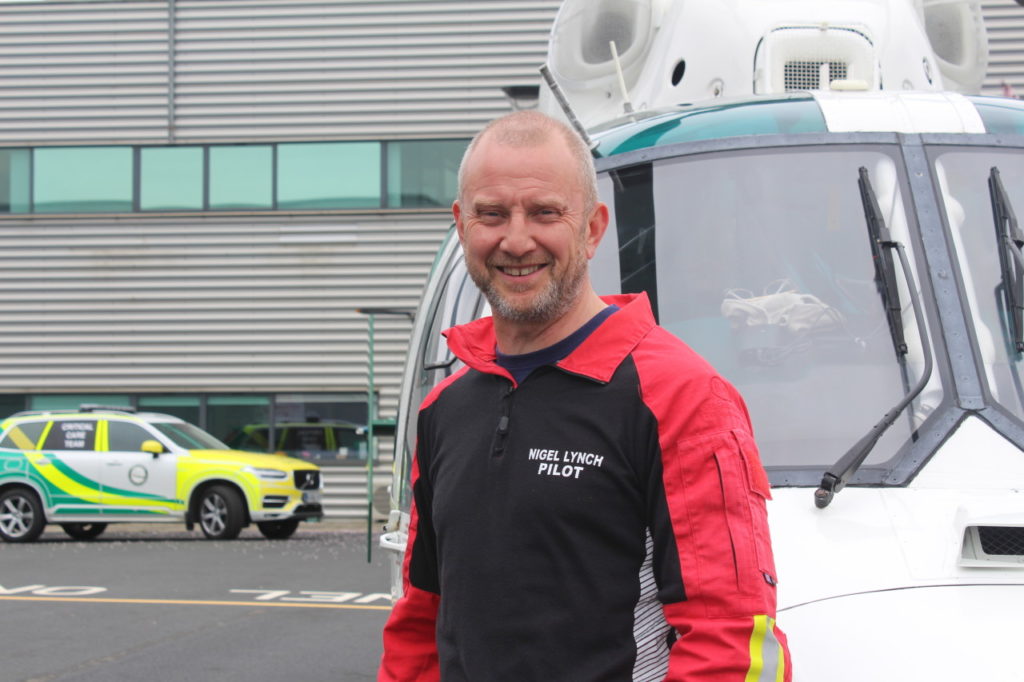We are seeing them in our skies more and more and although drones can be fun, for us, they are a major hazard.
Not too long ago, a rogue drone caused our Guardian of the North II helicopter a SEVEN-minute delay in lifting to take a critically injured person to hospital.
This delay in response time can mean the difference between life and death for someone in a serious condition.
The drone in question on scene a road traffic collision had been hovering over the site and the crew was unable to identify who was flying it and the person was recording footage of the incident.
Our duty pilot cannot start, move, or lift the aircraft until the drone has moved.
Here, GNAAS pilot Nigel Lynch explains the dangers of drones in relation to an air ambulance service, and how you can fly responsibly.


Drones have many uses, many of which bring great benefit to society, such as:
- The Environment Agency might use drones to check river levels, this can help with flood alerts
- Mountain rescue use drones to help search lost walkers in the fells
- The police will also use drones for search reasons which free up staff for policing matters
- Farmers use drones to check the conditions of their crops
- TV companies will use drones for aerial shots
The concern for GNAAS pilots is for the untrained, casual drone operator that might not understand the potential dangers of mixing drones with other aviation.
Drone or UAV (Unmanned Aerial Vehicles) are getting cheaper and increasing in numbers. Like all new technology, it is about awareness and taking responsibility.
Laser pens are a good case in point: laser pens are fun toys, but when people shine a laser at an aircraft, they don’t have an awareness of the issues that this is causing a pilot. Because of this, they don’t fully understand the potential risk to life.
Drone code
When you fly a drone in the UK, it is your responsibility to know the rules in place to keep everyone safe, the DRONE code is a good guide. Follow these simple steps to make sure you are flying safely and legally:
Don’t fly near airports
And be extra cautious if there is a hospital nearby
Remember to stay below 400ft
You might still encounter an air ambulance helicopter at this height. If you hear a helicopter, ground your drone until you can confirm there is no conflict.
Observe your drone at all times
If you can’t see your drone, you cannot guarantee the safety of other aviation.
Never fly near an aircraft
Don’t be tempted to film the helicopter landing or taking off unless you have coordinated with the pilot.
Enjoy responsibly
Please be aware of how your drones may affect other people.
Other considerations to bear in mind:
Height of flying
The rules are there for a reason and individuals flying drones should keep the device and general/commercial aviation apart. It is restricted to fly a drone above 400 feet and general aviation is not permitted below 500 feet (1000 feet over built-up areas). This should give some separation. However, UK air ambulances (including GNAAS) may fly lower than 500 feet for life-saving missions, bringing us into conflict with those drones operating at 400 feet.
Surroundings
For obvious reasons, drones are not permitted to fly close to airports/airfields. But drones around hospital locations are a big concern to air ambulance helicopters. We normally have a patient on board when landing at your local hospital. The landing and take-off phases of our missions are one of the most critical and challenging parts of the job. So, please use your drone with extra caution if there is a hospital within a mile or two and put your drone on the ground until the air ambulance has landed or departed and well out of the area. If the pilot sees a drone in the hospital’s area, they will have to divert for safety reasons to the next hospital or closest airfield. This will add time to the journey that the critically ill patient might not have.
Watch out for emergency services
The curious drone owner might want to see what is happening when they see all those blue flashing lights passing by. Well, if this is you, please know that an air ambulance might follow those blue light soon. GNAAS might be there before any other emergency service. If you hear a helicopter, please put your drone on the ground until you can confirm that your drone won’t cause a conflict with the air ambulance.
Volunteer at GNAAS
Dedicate a few hours of your time and help us to save lives across the region
Find out more


